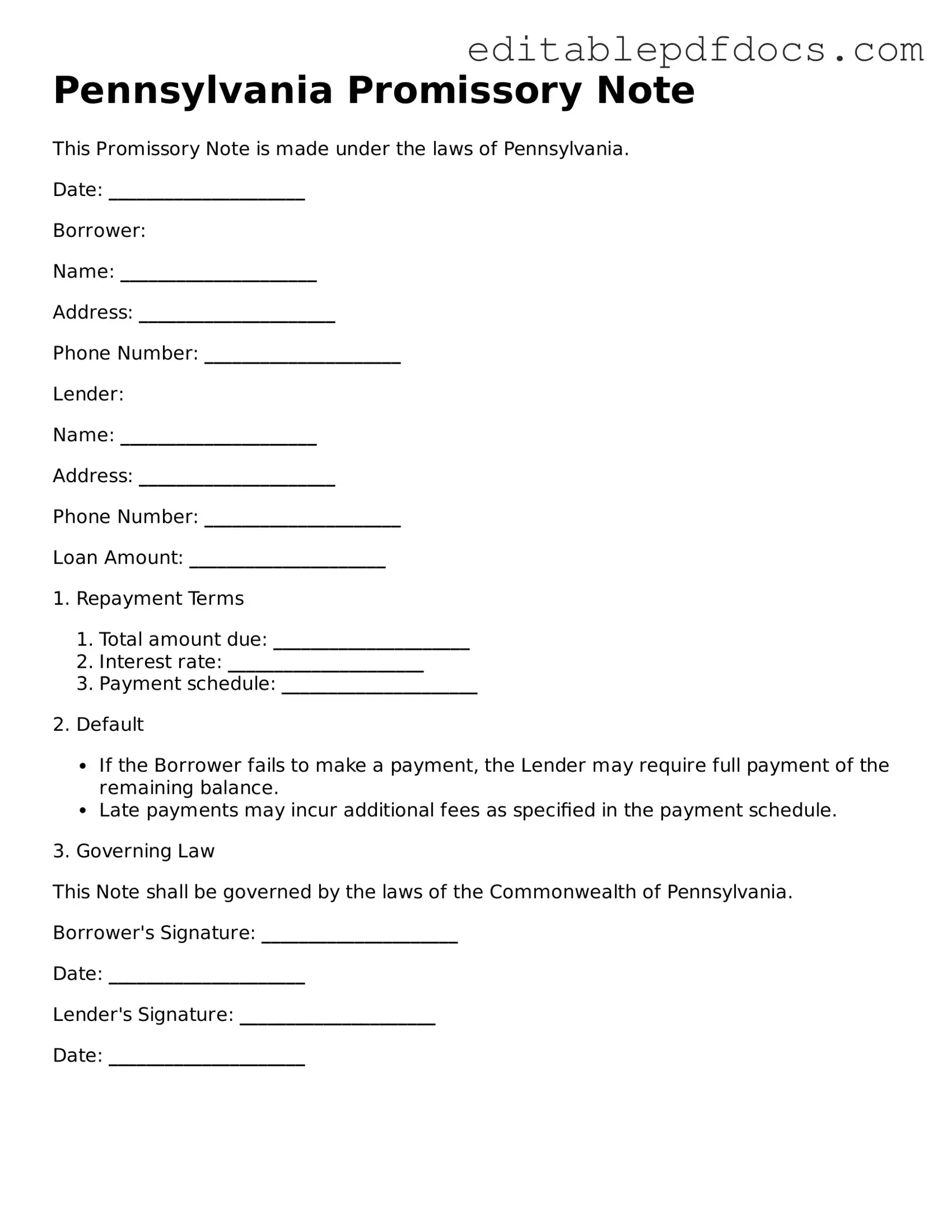Filling out a Pennsylvania Promissory Note form can seem straightforward, but many people make common mistakes that can lead to complications down the line. One frequent error is failing to include all necessary information. It’s important to provide complete details, such as the full names and addresses of both the borrower and the lender. Omitting any of this information can create confusion and potentially make the note unenforceable.
Another mistake often seen is not specifying the repayment terms clearly. The note should outline how much is being borrowed, the interest rate, and the repayment schedule. If these details are vague or missing, it can lead to misunderstandings about when payments are due and how much is owed.
People sometimes forget to include a date on the promissory note. This date is crucial as it establishes when the agreement begins. Without it, there could be disputes over when the repayment period starts, which can complicate matters if any issues arise later.
Additionally, some individuals neglect to sign the document. Both the borrower and the lender must sign the promissory note for it to be valid. A signature indicates that both parties agree to the terms laid out in the document. Without signatures, the note may not hold up in court.
Not having witnesses or a notary present can also be a significant oversight. While not always required, having a witness or a notary can add an extra layer of protection. This can help verify that both parties are entering into the agreement willingly and understand the terms.
Lastly, people often fail to keep a copy of the signed note. After the document is completed and signed, both parties should retain a copy for their records. This ensures that everyone has access to the terms agreed upon and can refer back to them if necessary.
